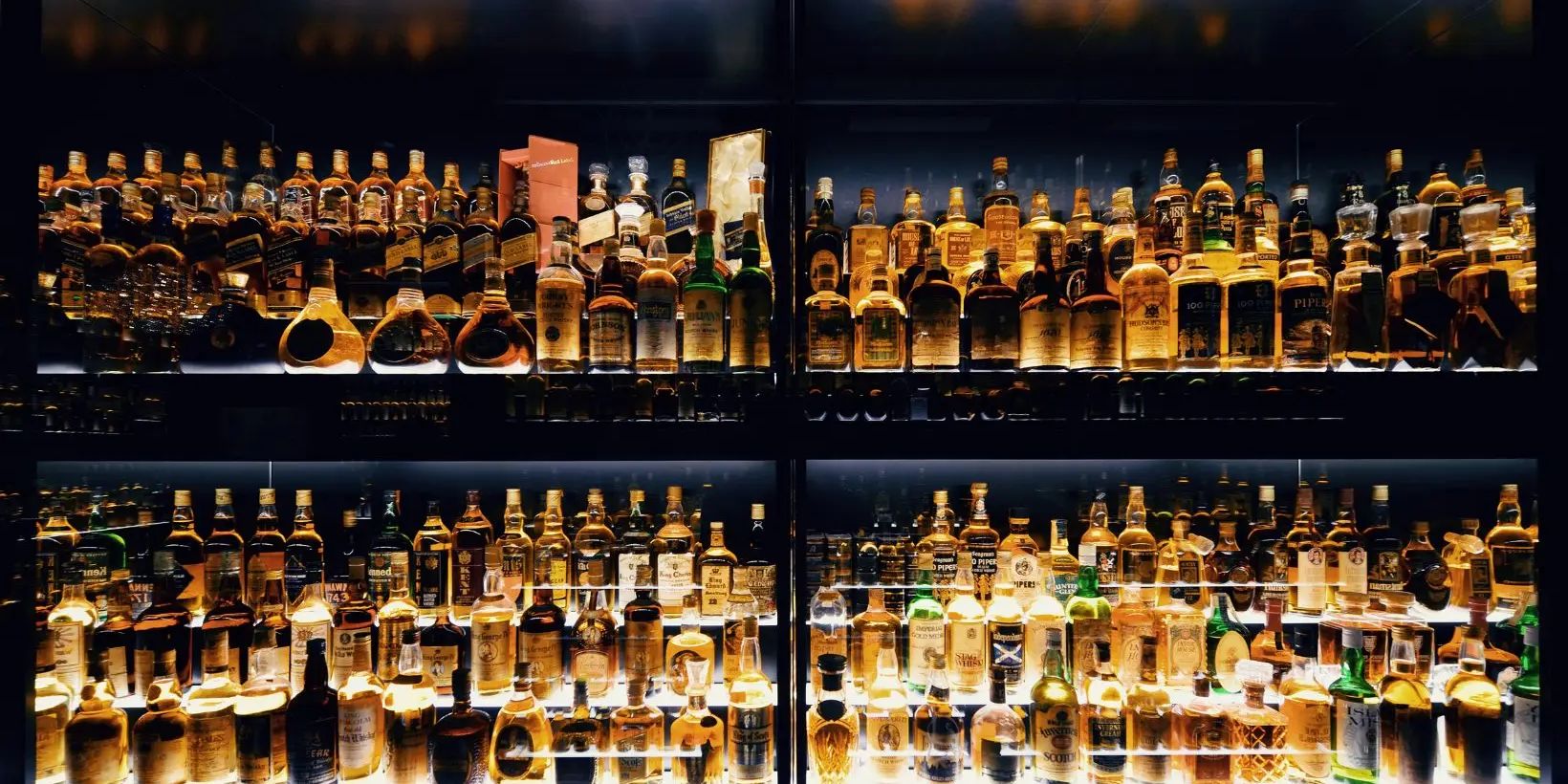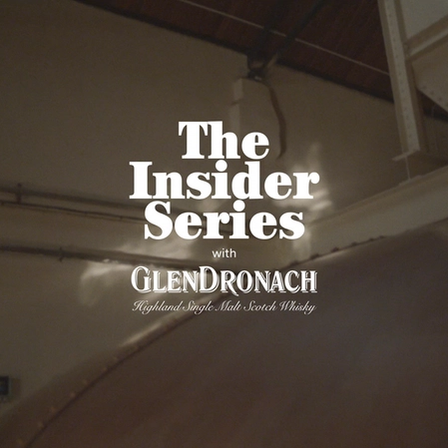- Insights
A Look at the World of Whisky
- Words By Emma Gibbs

Whisky is celebrated worldwide for its rich flavour, history, and cultural significance. But what is whisky? (or whiskey, if referring to the American or Irish spirit), and what is whisky/whiskey made from?
Join us for a whistle-stop tour through the world of whisky, exploring each of the main whisky-producing countries as well as the various types, regions, taste profiles and trends shaping the market.
But first…
What is Whisky?
Whisky is a dark, distilled spirit made from fermented grain and is typically aged in wooden barrels.
Where is Whisky Made?
The biggest and best-known producers are in Scotland, Ireland, The USA, and Japan, but whisky is also produced in many other countries including Canada, Australia, Taiwan, and New Zealand.
Scotland
Scotch whisky, often simply referred to as Scotch, has a rich, storied history and is world-renowned for its quality and diverse taste profile. Scotland has a long-standing tradition of producing some of the finest and most iconic whiskies in the world.
Types
There are three main types:
- Single Malt: Made from 100% malted barley from a single distillery.
- Single Grain: Produced from grains other than malted barley, normally rye.
- Blended Whisky: A blend of single malt and grain whiskies.
Production
All Scotch whisky starts with a fermentation of mashed grains, before a double distillation, then maturation in oak barrels for at least 3 years and one day.
Flavour Profiles
Scotch whisky has at least 12 different flavour profiles, ranging from spicy and dry, to oily and coastal and right through to heavily peated.
Regions
Scotland has five distinct whisky-producing regions. Each region offers a diverse array of flavours, styles and characteristics which are due to the differences in distilling techniques and variation in climate.
- Lowlands: Known for producing whisky with a light and grassy flavour profile. Well-known distilleries include: Auchentoshan, Bladnoch and Glenkinchie.
- Campbeltown: The smallest region producing a varied flavour profile. The only distilleries are: Springbank, Glengyle and Glen Scotia.
- Islay: World-renowned for producing peated whisky. Well-known distilleries include: Laphroaig, Lagavulin and Bruichladdich.
- The Highlands: Offering flavour profiles for every palate. Well-known distilleries include: Dalmore, Glenmorangie and Oban.
- Speyside: The largest concentration of distilleries in Scotland, producing often fruity or peaty whisky. Well-known distilleries include: Glenlivet, Glenfiddich and Macallan.
Market Outlook
The market is huge and growing considerably, due in part to rising demand and the increasing preference of consumers towards premium products. The industry is eager to attract the next generation of whisky drinkers and looks towards experimentation with cask finishes, utilising new technology and employing sustainable production processes.
Ireland
Irish whiskey, known for its smooth character and flavour profile, has a rich history, resilience, and artisanal tradition. It is thought to have originated with monks in the 12th century where it became known as ‘uisce beatha’, Old Irish for the ‘water of life.’
Types
There are four distinct types:
- Single Malt: crafted from 100% malted barley in a single distillery. Popular brands include: Bushmills, Waterford and Teeling.
- Single Pot Still: Unique to Ireland, a blend of malted and unmalted barley. Popular brands include: Powers, Redbreast and Spot Whiskey.
- Single Grain: Typically made from corn, wheat or rye. Popular brands include Glendalough, Egan’s and The Whistler.
- Blended Irish Whiskey: A blend of malt and grain whiskies. Popular brands include: Jameson Whiskey, Tullamore D.E.W. and Midleton.
Production
The production process involves mashing grains, fermentation to produce alcohol, triple distillation in traditional copper pot stills, and then ageing for 3 years in wooden casks, often ex-bourbon barrels.
The triple distillation contributes to Irish whiskey’s uniquely smooth mouthfeel.
Flavour Profile
Irish whiskey’s taste profiles often include notes of honey, vanilla, and orchard fruits. Some may also feature subtle spices and nuttiness.
Market Outlook
Irish whiskey is experiencing a remarkable resurgence in popularity. Over the last few years, there’s been a focus on innovation and quality, sales have boomed, and production has increased with an estimated 3.5 million casks maturing at any one time.
There are currently over 40 distilleries in Ireland and Northern Ireland, but new distilleries and brands are emerging at a rapid pace, including a new wave of small craft producers.
The USA
American whiskey, a celebrated and diverse spirit with a history as robust as its flavours, embodies the essence of the United States. It traces its roots back to the 18th century when European settlers brought their distillation knowledge to the New World.
Types
There are three main types:
- Bourbon: Distilled from at least 51% corn. Popular brands include: Buffalo Trace, Woodford Reserve and Maker’s Mark.
- Tennessee Whiskey: Similar to bourbon but with an extra filtration stage. Popular brands include: Jack Daniel’s, George Dickel and Uncle Nearest.
- Rye Whiskey: Crafted from 51% rye grain. Popular brands include: Bulleit, WhistlePig and Rittenhouse.
Production
The production process typically includes mashing grains, fermentation, distillation in column stills and then ageing for a minimum of two years in new, charred oak barrels.
Tennessee whiskey has an additional step called the ‘Lincoln County Process’ which involves filtration through charred maple wood chips before maturation.
Flavour Profile
American whiskey offers a broad spectrum of flavour profiles. Bourbon is characterised by sweet vanilla and oak notes. Rye whiskey is spicier, with flavours of black pepper and cloves. Tennessee whiskey emphasises smoothness and sweetness with its additional charcoal filtering process.
Market Outlook
American whiskey has seen growing global demand in recent years, particularly for bourbon and rye. Distilleries are innovating and experimenting with new flavours and cask finishes and there has been a rise in craft distilleries and small-batch production offering unique and innovative expressions.
Japan
Japanese whisky has won the attention of connoisseurs all over the world with its subtle flavours and meticulous craftsmanship. Its story began in the early 20th century when distillers drew inspiration from traditional Scottish distilling techniques.
Types
There are two main types, mostly owned by two brands, Nikka Whisky and Suntory.
- Single malt: produced from 100% malted barley. Popular labels include: Hakushu, Yamazaki and Yoichi.
- Blended whisky: A blend of malt and grain whiskies. Popular labels include: Togouchi, Hanyu and Yamazakura.
Production
Japanese whisky follows a similar production process to Scotch whisky. However, Japan’s climate significantly influences the maturation process. The extreme temperature variations allow whisky to interact with the wood, creating refined and nuanced flavours.
In Japan, whisky is often matured in Mizunara oak casks which are more porous than American oak and impart notes of sandalwood, coconut and spice.
Flavour Profile
Japanese whisky’s common notes include soft fruit, floral elements, subtle peat and oak. The meticulous craftsmanship and careful cask selection contribute to the character.
Market Outlook
The Japanese whisky market is thriving, with growing recognition and appreciation on a global scale. Aged expressions have been in very short supply but are now beginning to reappear and are highly sought after by collectors and enthusiasts. Many of the large producers are investing in production capacity to meet growing global demand.
Final Thoughts
Whisky, the fifth most commonly consumed alcohol in the world, is a multi-billion-pound global phenomenon and is growing steadily. The global whisky market was estimated to be worth $64 bn in 2022, and will grow by 6% (CAGR) to a predicted $91.3 bn by 2028.


